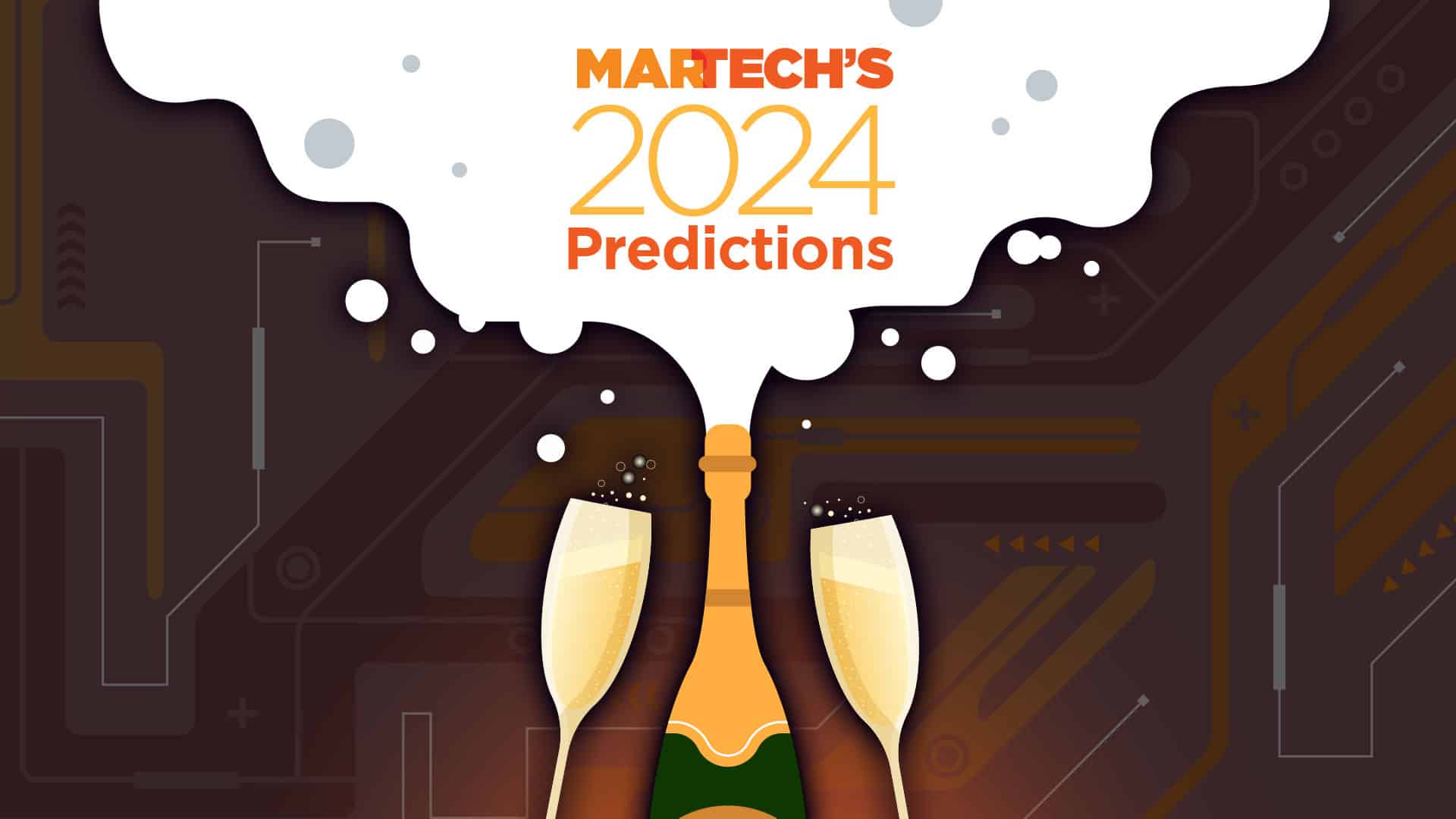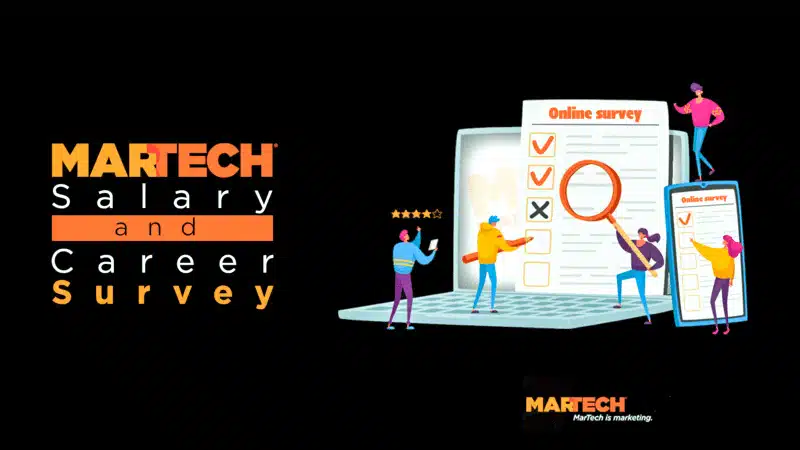MARKETING
Better customer experience is on the way

Marketers will improve customer experience in 2024 so brands can remain competitive and demonstrate to customers that they matter. Every year the bar gets raised. In 2024, keys to customer success will include better personalization delivered at scale by ramped-up automation and generative AI. And better digital content will surface, if organizations put in place the necessary guardrails for generative AI to fuel the anticipated content surge.
More personalized experiences by humans and AI working together
Humans aren’t going to be taken out of the customer experience entirely in 2024. Instead, look for AI-augmented systems to help make experience and service more efficient for marketers and agents.
“Organizations realize that for more challenging issues, customers want to have the ability to connect with a human,” said Keith Kirkpatrick, research director, enterprise applications for The Futurum Group. “And when you do that, you want to make that interaction as efficient and as quick as possible. If you have AI helping, you’re going to be able to make sure that agent has the information right in front of them, served up in context, and they don’t need to go hunting around for it.”
This added context gives customers, as well as marketers, more confidence for higher-priced sales. With AI assistance, B2B and high-end retail will see an overhaul of personalized customer experiences in the year ahead.
Dig deeper: Salesforce updates Einstein 1 Platform with unified business data
Translating in-person experiences virtually
Whether using improved AI-powered chatbots, or delivering more informed experiences fueled by customer data, brands will provide more quality customer interactions traditionally associated with high-end retail.
“A key focus for retailers and ecommerce brands in 2024 will be transforming great in-person conversations and purchase experiences into natural interactions through messaging apps — in other words, mimicking the in-store experience in our virtual world,” said Joscha Koepke, head of product at conversational marketing company Connectly.
He added, “As retailers increasingly embrace new ways of online and mobile shopping, brands need to bring this luxury brand experience to a broader set of consumers through two-way communication.”
AI driving experience and customer support
“In 2024, companies that incorporate AI into the customer experience in the right ways will set themselves apart,” said Chris Savage, CEO and co-founder of video marketing platform Wistia.
AI-generated chat, increasingly, will take the burden off human agents providing customer support. However, the margin of error is slim for assisting customers who just want their problems fixed. But as AI chatbots improve, customers will increasingly welcome these assistants.
“The minute this technology is more refined and helpful, every customer will be looking for AI chat support as it will provide instantaneous responses to questions 24/7 in any language,” Savage said. “At the same time, having humans available to supplement these chatbots will quickly become a differentiator. There will be questions and issues that only humans can answer, and if customers can’t easily gain access to a support team when needed, their company loyalty may begin to waver.”
Customer expectations will climb, demanding more personalization across all channels, including mobile apps.
“AI will allow for so many more edge cases and ways to personalize the customer experience, and we’ll start to expect all apps to feel like they have a much better understanding of us and our preferences,” said Savage.
B2B marketers will use video for better trust and accessibility
Generative AI has applications that extend far beyond intelligent chatbots. The technology can be used to power transcription and make video more successful. As a result, B2B marketers will have more meaningful, accessible videos to help drive customer experiences.
“It’s becoming clear that the B2B marketing landscape will undergo a transformative shift around accessibility, video and AI in 2024,” said Jennifer Griffin Smith, CMO for digital experience company Acquia. “Further, as businesses recognize the diverse needs of their audience, digital and communication accessibility will be paramount.”
Expect the wider use of subtitles and voiceover in video to build trust with customers who have disabilities and preferences for captions. Meeting these expectations will help build customer trust in the new year, even as marketers face challenges to trust related to data security and privacy.

Take Martech’s 2024 Salary and Career Survey
From AI to layoffs, it’s been quite a year. We’d like to know how it’s been for you. Please take this short survey so we can have your input on the state of martech salaries and careers.
Using AI to pre-screen experience as content surges
One of the promises made in 2023 by the rise of generative AI is the ability to scale content. With content surging, the need for quality control also increases. To meet this challenge, AI will come to the rescue again.
“We’re seeing the beginning of an onslaught of AI-generated content,” said Bryan Whitaker, CEO of data technology company Statara. “Unless AI prompts are topnotch, or human editors are involved, content still runs the risk of having embarrassing errors, coming off as robotic, and being glaringly inauthentic.”
“The surge in content production means that existing approval workflows will become unsustainable,” said Levi Matkins, CEO of mobile marketing platform LifeStreet. “Traditionally bogged down by multiple checkpoints and a lengthy creative process, generative AI will compel companies to reevaluate and streamline these processes. Brands serious about leveraging AI might train models to pre-screen content for brand compliance, using AI as a first line of defense.”
The result is that brands will be able to produce more content confidently. And with more efficient content production workflows, marketers will be able to concentrate on compelling ideas instead of the nuts and bolts of approval and distribution.
“With the increasing ease and affordability of content creation, the focus will shift from execution to ideation,” said Matkins. “The quality (versus the quantity) of content ideas becomes the differentiating factor in a market where execution is no longer a barrier. This shift will put a premium on creativity and strategic thinking, pushing brands to invest more in developing unique and resonant concepts that can be quickly brought to life through AI.”
Get MarTech! Daily. Free. In your inbox.
AI will boost marketing and sales readiness
In the new year, marketers and sales representatives will be using AI in important client meetings, improving readiness.
“Whether it’s using AI to instantaneously surface the most compelling pitch deck, talk track or playbook, AI will enable sellers to show up as trusted advisors, earning buyer confidence and becoming indispensable to the customer journey,” said Hendrik Isebaert, CEO of sales enablement platform Showpad. “In addition to sales meetings, AI will also be leveraged to augment the role of the internal sales coach, making sales development programs smarter and more scalable.”
CMOs more hands-on with service
“In 2024, the role of the CMO will become more heavily entwined in the efforts to build stronger customer experience and interactions,” said Josh Mueller, CMO for cloud-based technology company Avaya. “In the contact center, specifically, expect to see CMOs closer to the content delivered in the contact center through campaign messaging, contact center agent training, or hands-on roles in applying AI to call routing.”
The other side of this development is that service data will have a bigger voice internally.
“The customer will have a stronger voice in the boardroom thanks to the power of AI,” said Cynthia Sener, President GTM at brand intelligence company Chatmeter. “AI is poised to revolutionize marketing by turning large volumes of unsolicited customer feedback into actionable, strategic insights. Brands embracing the power of AI to extract key themes and sentiments about customers’ real-time, honest experiences with their products and services will outshine competitors.”


















